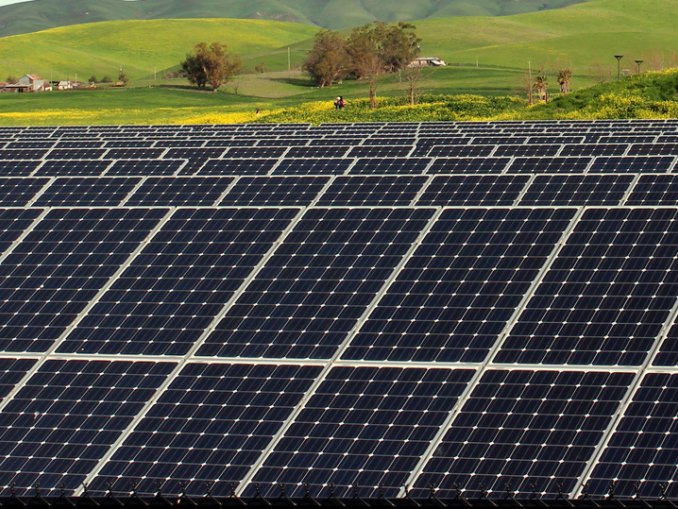Now why in the world would we want to learn about the history of solar power?
For the answer to that question we can rely on the wisdom of the ages:
A wise man once said that in order to know where we’re going we need to know where we’ve been.
I’m not sure if he had solar power history in mind when he said this, but his words are very applicable to the subject.
So let’s follow that this wise man’s advice and take a look at the story of solar power through the years.
To keep this as simple as possible, we’ll break things down into three easily digestible portions based on the three main types of solar energy.
These are:
- Passive solar
- Solar Thermal
- Solar Electric (Photovoltaics)
Passive Solar
The Greeks and Romans Get Active With Passive Solar
Passive solar power is pretty simple, it doesn’t require any fans, pumps, or panels.
It just means using part of your home to collect the sun’s energy. Not surprisingly, passive solar is the first stop in our journey into the history of solar power.

Archaeological evidence shows that the ancient Greeks were building their homes in grid patterns to utilize the heat and light of the sun in the fifth century BC.
Socrates sang the praises of passive solar power when he wrote that “In houses that look toward the south, the sun penetrates the portico in winter”.
The playwright Aeschylus was a little more elitist in his solar power observations, noting that only primitives “lacked knowledge of houses turned to face the winter sun, dwelling beneath the ground like swarming ants in sunless caves.”
Zing!
Meanwhile, Back in America…
In the twelfth century AD the Pueblo Indians built Acoma (the “Sky City”). Each building had a south facing adobe wall which absorbed the sun’s heat all day and then heated the interior of the house at night.
Early Spanish settlers in America also built their homes with the main portion of the house facing south. They closed their shutters at night to keep in the warmth that the sun had provided during the day.
20th Century Passive
We’ve seen some examples of ancient solar power, now what about the ‘modern’ history of solar power?
In the early 20th century an observant city planner in Britain said that “every house should have its face turned to the sun, whence comes light, sweetness and health”.
In the 1930’s German architect Hannes Meyer said that a house should be viewed as a “storage cell for the heat of the sun”. In fact, throughout the 1930’s Germany spearheaded a resurgence in solar home building.
Passive Solar: Our Friend When Times Get Tough
The history of solar power has followed a similar pattern since the time of the ancient Greeks.
- When fuel is expensive or hard to come by, we think passive solar is the greatest thing since sliced bread.
- When fuel is cheap and abundant we ditch passive solar faster than you can say “baseboard electric heating”.
Well, I’m no fortune teller but I think we’ll be getting friendly with our old friend passive solar again in the near future.
Solar Thermal
Piping Hot Water? Yes Please!
Solar thermal refers to the direct conversion of sunlight to heat. The main application of solar thermal has been the heating of our water for showers and other household fun.
In the 1760’s Swiss naturalist Horace de Saussure built an insulated, black, glass-covered box. He then put it in the sun and watched the temperature of his “hot box” climb to 228°F.
How did it work?
Well, the sunlight easily passed through the glass top and was absorbed by the black interior of the box and converted to heat.
Once converted to heat, the sun’s energy was trapped in the box by the glass lid that had allowed the sunlight in so easily.
To simplify: sunlight gets in > turns into heat > can’t get out
This brilliantly simple tool would be the key to countless hot showers over the next few centuries.
But first things first.
In the nineteenth century people began painting metal water tanks black and putting them in the sun to heat up their water.
These early water heaters were cheaper than heating water by burning coal or wood but they took all day to heat up and lost their heat every night.
Enter Clarence Kemp.
In 1891 Kemp patented a new solar water heater that combined the black water tank idea with the “hot box” idea of Horace de Saussure. The glass casing of the water tank increased its ability to collect and retain the sun’s heat.
Kemp saucily titled his invention “The Climax” and began taking orders.
The next revolution in solar thermal occurred in 1909 when William J. Bailey patented a solar water heater that separated the heating portion which was exposed to the sun and the storage tank which was kept in the house.
This allowed the water to heat up faster (because a smaller amount was exposed to the sun at one time) and keep its heat longer (because the storage tank wasn’t exposed to the nighttime cold).
Cheap natural gas and electricity put a dent in the solar water heater market but whenever fuel prices spiked, solar thermal became popular again (sound familiar?).
Solar Panels (Photovoltaics)
Check out the history of solar panels as we continue our journey through the history of solar power.
